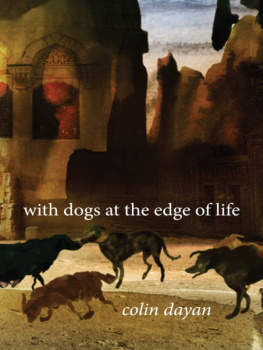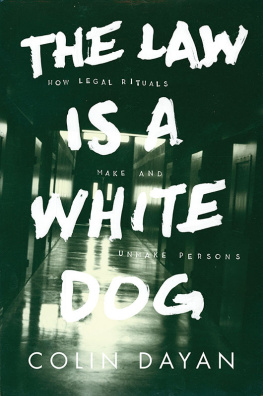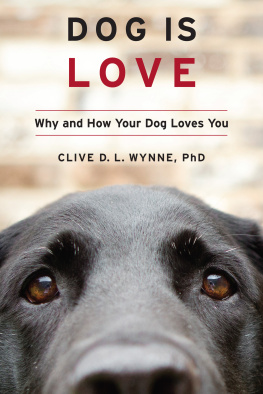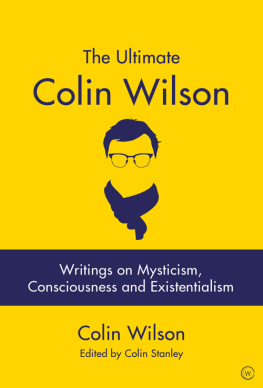with dogs at the edge of life
with dogs at the edge of life
colin dayan

COLUMBIA UNIVERSITY PRESS
NEW YORKColumbia University Press
Publishers Since 1893
New York Chichester, West Sussex
cup.columbia.edu
Copyright 2016 Columbia University Press
All rights reserved
E-ISBN 978-0-231-54074-2
Library of Congress Cataloging-in-Publication Data
Dayan, Colin, author.
With dogs at the edge of life / Colin Dayan.
pages cm
Includes bibliographical references and index.
ISBN 978-0-231-16712-3 (cloth : alk. paper)
ISBN 978-0-231-54074-2 (e-book)
1. Dog ownersPsychology. 2. DogsSocial aspectsUnited States. 3. Human-animal relationshipsMoral and ethical aspects. 4. Animal welfareUnited States. I. Title.
SF422.86.D93 2016
636.7dc23
2015020789
A Columbia University Press E-book.
CUP would be pleased to hear about your reading experience with this e-book at .
COVER DESIGN: Milenda Nan Ok Lee
COVER IMAGE: Frame from Serge Avedikian, Barking Island (2010). (Courtesy of Serge Avedikian, Ron Dyens, and Thomas Azulos)
References to websites (URLs) were accurate at the time of writing. Neither the author nor Columbia University Press is responsible for URLs that may have expired or changed since the manuscript was prepared.
In memory of Mehdi (19962011)
and for Stella, the dog of my heart
Among the first were the dogs, faithful creatures, which, scattered about on all the roads, yielded their breath with reluctance.
LUCRETIUS, DE RERUM NATURA
contents
IN JACQUES COUSTEAUS The Silent World, there is a spectacular scene shot by the young Louis Malle, an episode so gripping that Cousteau partially restaged it. He filmed it again to get it absolutely right. His actors commit a deed so reckless and brutal that to repeat it seems unspeakable: the first time as reality, the second time as cinema.
The crew of the Calypso, a handsome group of men, move through the blue of the sea and dive into the unknown, cage an unruly fish that becomes a pet, mess with coral reefs, cavort with various creatures of the deep. One afternoon the propeller of Cousteaus boat wounds a baby whale. Sharks gather and begin their frenzy of consumption. Something crazy possesses the men as they watch the impassioned gorge, and they take revenge in a massacre fiercer than the shark supper itself. Pulling the sharks onto the deck, they stab and hack them with axes until every last one becomes mincemeat. The deck is awash in blood. Immune to guilt following a slaughter managed as efficiently as Odysseuss killing of the suitors, they return to their senses, and hungry, they leave the deck, going below to eat. Only one nonhuman creature remains alive as witness: a dog. The dog looks at them. Then he gets up and walks away. After carnage too atrocious for words, only the dog responds with what we can interpret as spot-on in its gentle, unremitting regard.
We can never know what the dogs exit means, if it means anything at all. I am captivated by the momentous incomprehensibility of this canine presence. It somehow matters so much or not at all that the action is as close as we get to ethical sensibility in the film. Not instrumental in its moralism, but rather another kind of consideration that is not contemptuous or peremptory. In its reticence and muteness pregnant with meaning, the dog regard matters, even though viewers dont know what to make of it.
HERMAN MELVILLE WAS A STERN ETHICIST when it came to humans ravaging the earth and all living things, especially at sea. In Stubbs Supper, the chapter in Moby-Dick that follows the second mate Stubbs killing of a whale, Melville makes sure readers know that cruelty rages in the hands and hearts of humans. No shark gorging can compare with the sacramental supper on the Pequod. He turns the partakers of the feast, the valiant butchers over the deck-tablecannibally carving each others live meat with carving-knives, into sharks. Then he reaches beyond the whale hunt into a metamorphosis that captures the natural history of the Americas, calling these sharks the invariable outriders of all slave ships crossing the Atlantic.
Readers of Melville know how much he liked dogs to appear either as grounds for comparison or as characters in their own right. They are loyal pets or savage fighters. They may be abandoned and mournful. But in Moby-Dick there are no dogs, unless we recognize them as the ultimate term of comparison in the most sentient and mammalian of scenes. Melville lingers for pages on the pods of whales, hovering together in conjugal peace, coming up to the boats as if household dogs, reveling in dalliance and delight before being wantonly slaughtered by Ahabs crew.
I mention Melville here because he has hovered throughout my writing. Along with dogs, he has been the inspiration. He understood how the very forms of speech and heights of artifice went hand in hand with a history of extermination, always masked by the veneer of enlightenment. Never calling for sympathy or sentiment, Melville writes so that his readers must ask, with Cora Diamond in The Realistic Spirit, and I paraphrase, What could we feel if we could feel what we experience sufficiently? Such feeling demands a radical change in perspective: not only in how we see the world but also in how we read a story.
MOST OF THIS BOOK is in the form of tales: whether those told by the state, by the law, by humane societies, by dog fighters, dog breeders, dog trainers, or by me as I remember and recognize how dogs came into my life. Dogs stand in for a bridgethe bridge that joins persons to things, life to death, both in our nightmares and in our daily lives.
Every group, every culture needs its scapegoatthe sacrifice that bears the sins of the human community on its back. The dog we label pit bull holds in its name all manner of canine jowl and stance. Though this dog is the most obvious brunt of human cruelty, every dog, especially any large dog that has not been tailor-made according to the needs of humans, is at risk, whether in public housing or in the co-ops of New York or on the streets of Romania, Turkey, Mongolia, or Detroit, or in the kill shelters of the United States.
In writing this book, I offer another kind of rendition of creaturely experience that upsets the reliable, reasonable, and moral order of things. The tripartite structure is deliberate. I move between obviously disparate points of view and also through multiple identities. Dogs bear the burden of revelation. With them, and succumbing to their gaze, as unintelligible as that of Cousteaus dog, I try to narrow the gap between body and mind, human and nonhuman, matter and spirit.
I do not mean here to call to mind any concept of relativism but rather to cast doubt on the robustness and transportability of the ontological partitions that we so easily assume. This is a personal bias, since I have long tried to invoke, even if tentatively, the seepage between entities assumed to be distinct, whether dead or living, animate or inanimate, commonplace or extraordinary. For me the interstitial, a poise or suspension between opposites, matters most. So I invoke the oscillation between the categories that bind.
Such a suspension matters to me both literally and figuratively, as a matter of politics and of aesthetics. The necessity of working in the interstices has been with me for quite some time now, ever since I first read Mallarm, who tackled the centre du suspens vibratoire
 COLUMBIA UNIVERSITY PRESS NEW YORK
COLUMBIA UNIVERSITY PRESS NEW YORK




